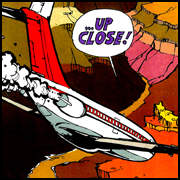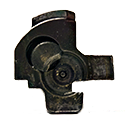|
Gorson posted:Basically a dual sport version of the MT07, very cool and good but came out several years after so it's in very high demand. Not sure if they're common in dealerships but if you're buying used very unlikely you'll find one. Also the MT07 is a name change, you'll also want to search for them by the old name (FZ07 or FZ-07). FZ is a NA name only, no?
|
|
|
|

|
| # ? Jun 3, 2024 18:06 |
|
Xakura posted:FZ is a NA name only, no? Correct, and changed over here for the 2018 model year iirc
|
|
|
|
Iíve been watching revzilla daily rider and most times I come away with a new bike I want to buy. There are too many good bikes.
|
|
|
|
KidDynamite posted:Iíve been watching revzilla daily rider and most times I come away with a new bike I want to buy. There are too many good bikes. Your big decider is going to be what you can actually get sadly. Even when you're getting hosed from a dealer.
|
|
|
|
KidDynamite posted:Iíve been watching revzilla daily rider and most times I come away with a new bike I want to buy. There are too many good bikes. It's a great series. Sometimes it works the other way too - the Tracer 9 GT video killed any desire I had to buy one.
|
|
|
|
I remember really looking forward to riding the tracer after having a go on an mt09, and I thought it was one of the most ergonomically terrible bikes I've ever experienced, with truly horrendous suspension for the amount of power the thing had. Pretty disappointing, Yamaha really need to get out of the nineties with their forks at least.
|
|
|
|
|
Seems like every major complaint with any Yamahas stems from their suspension. They are usually the price leader though, but it would be nice if their suspension department was half as good as their engine development department. Although, if you're just taking suspension off the shelf, can they do much with motorcycles? In car world, you can "tune" and improve even basic suspension design if you care (ex mazda and their rear torsion beam).
|
|
|
|
It's purely just cost cutting and momentum at this point. There is zero excuse for damping rod forks in anything now, even learner bikes deserve better, but the slight cost advantage over cartridges + dominating the market segments filled by people who can't ride for poo poo means it's better to weather journalistic scolding than to actually improve things. Also, their basic geometry decisions and frame design nous mean the bikes do handle really, really well within the limitations of the suspension, much better than the average kawasaki or honda, so it's a relatively small impact on outright performance if you grit your teeth and use your moxy. The MT09 was improved because it started to butt up against the ingrained 'this might not be entirely safe' reflex all japanese manufacturers have. The fact it came with what it did to start with is pretty dire. Kayaba or showa can make whatever dimension fork you want with whatever spring rate and damping character you want, it's purely cost. No bike will ever be ideal out of the box, because under sprung is safer than over sprung and they don't know who's going to ride it so have to compromise in the name of safety, but they can definitely do much better than they currently are in terms of the basic level of capability.
|
|
|
|
|
Seems like a lot of the Japanese bikes are comfortably (softly) sprung for a rider that weighs like 160lb. Read any comments section right now where the CRF300L is tested/ridden. It's always like "I weight 250lb and i want to put luggage on this, why didn't honda make this suspension work for me out of the box WHERE IS MY UNICORN BIKE FOR ME". Well poo poo dude, you're on the right side of the bellcurve already AND you want luggage? Yeah, poo poo off the shelf probably isn't going to work really well. Just like most shirts are too short for me due to my height. Then the cheapest possible soft suspension in the box makes sense so they can get you a bike at a lower cost and you can spend extra on making the suspension fit you better down the line; instead of Honda bumping up the cost of the bike by 2k, then having to compromise on who they set the suspension up for and offering adjustable suspension that majority of riders probably won't adjust. Kawasaki managed to give the KLX300 adjustable suspension with a $500 premium over the CRF300L, so Honda does deserve some criticism for phoning it in. But you can't even buy either right now without waiting around forever so they don't have an incentive to change anything. Plus supply line issue things. Russian Bear fucked around with this message at 21:08 on Apr 22, 2022 |
|
|
|
For the opposite effect you can try being a 60kg person trying to ride a speed triple or big Ducati. Bikes sprung closer to 'right' for adult Caucasian males are harsh for me and I'm a tall 70kg, if you're unfortunate enough to be short AND light you're doomed, you'll never get enough energy into the tires and are likely to crash for seemingly no reason. Soggy is safe.
|
|
|
|
|
This reminds me of something I was thinking about the other day. How exactly do you figure out which springs to put on your bike? Getting the weight of the bike and rider is easy enough, but donít you also need to know the combined weight distribution? What about center of gravity? Would a bike with a higher COG need slightly stiffer springs than a comparable bike with lower COG? Or is that where the valving comes in? Do you exclude the unsprung weight? Or is that simply another factor since the spring has to go in both directions? Thatís all setting aside how the type of bike, type of riding, pace, etc., which I imagine are additional factors.
|
|
|
|
Toe Rag posted:This reminds me of something I was thinking about the other day. How exactly do you figure out which springs to put on your bike? Getting the weight of the bike and rider is easy enough, but donít you also need to know the combined weight distribution? What about center of gravity? Would a bike with a higher COG need slightly stiffer springs than a comparable bike with lower COG? Or is that where the valving comes in? Do you exclude the unsprung weight? Or is that simply another factor since the spring has to go in both directions? Thatís all setting aside how the type of bike, type of riding, pace, etc., which I imagine are additional factors. Racetech has a spring rate calculator by bike and rider weight plus mass on their website. I had good luck also emailing them and getting a little guidance picking the right ones.
|
|
|
|
Toe Rag posted:This reminds me of something I was thinking about the other day. How exactly do you figure out which springs to put on your bike? Getting the weight of the bike and rider is easy enough, but donít you also need to know the combined weight distribution? What about center of gravity? Would a bike with a higher COG need slightly stiffer springs than a comparable bike with lower COG? Or is that where the valving comes in? Do you exclude the unsprung weight? Or is that simply another factor since the spring has to go in both directions? Thatís all setting aside how the type of bike, type of riding, pace, etc., which I imagine are additional factors. Look up some Dave Moss videos on youtube, basically: yes, if you just wanted to do this purely on paper you would have to account for a LOT of variables. In real life you can just plop your rear end on the bike and check to see that a) the front doesn't return too quickly/bounce, doesn't return too slowly, b) doesn't bottom out, and c) the sag of the bike empty and with you on it. Then check the same for the rear. Theoretically the rear and the front should compress at about the same rate and should both be critically damped. If you do some napkin math and know the spring rate you have already you can backfigure how much stiffer/softer the spring needs to be if there is a problem. Potential problems: too much sag, bottoming out, underdamped, over-damped, uneven back vs front, whatever. You can also use a calculator, but empirically checking this is gonna be more reliable because who knows what kind of silliness you did to your bike compared to the one racetech did their calculations off of. Or take it to a reputable suspension shop. DearSirXNORMadam fucked around with this message at 23:14 on Apr 22, 2022 |
|
|
|
Fork cartridges and shock completely transformed my FZ-09; the factory stuff was completely undersprung and underdamped, and it was the "updated" gen 2 parts. Couldn't get the sag set properly and it bottomed out if you showed it a picture of a pothole. FWIW I'm around 190lb with my gear on, so the point about Yamaha tuning their suspension for the average rider in the Japanese market probably isn't far off.
|
|
|
|
Basically there is no way to go from numbers on paper straight to a bike that works. MotoGP teams spend millions developing a bike, with the finest engineers crunching the biggest numbers, yet the only way to actually extract performance from the bike remains the same: guy does laps, gives feedback, you change the bike to make him happy while trying to avoid wrecking the thing completely. Spring rate numbers and equations will get you in the ballpark, but the ballpark of what's viable and what humans like is actually pretty huge and gives lots of leeway. I get extremely suspicious the moment anyone starts going on about magic numbers and calculating the perfect geometry because arriving at a good solution through purely theoretical means is currently impossible in bikes afaict. Re: Dave moss, I don't like that guy cause he doesn't know how anything actually works, he just parrots wisdom from smarter and more skilled people in a one size fits all way.
|
|
|
|
|
Springs support the load. Valving controls the spring as it responds to terrain changes. Most any suspension shop or yeah Racetech can figure out the hard part for you. You call em up and provide the following: what bike it is, what is on it, what you and your gear weigh, how will you use your bike, and how you typically ride this bike. They'll then convert your parameters into some physical numbers based around that specific bike then that gets pushed into a spreadsheet calc or the like full of either equations to do the hardwork for you or a matrix of known working setups. You get a value of what is close to an answer hence why you need to fine tune the springs/valvestack to get perfect results. Springs: The spring itself isn't super hard. Hooke has a law for a linear spring but its not always 100% the case with springs, especially motorcycle springs. Most spring shops work with kg/mm or some pounds per inch. WARNING, MATH: (F=kx, where k is your constant spring rate, x is small compared to the total deformation of the spring.)(progressive springs, you're looking at k as a variable comprised of each member coil's linear rate.)(to work for k, you need the following: (modulus of the metal used to form the spring * wire diameter to the power of 4) divided by ( 8 times the active number of coils times the mean coil diamter to the third power) (chrome silicon spring steel 8,102kg/mm^2 or 11.5x10^6 lbs/in^2) If you know the bikes sprung weight + your weight + your gear + your cargo then you can calculate a spring rate based on this which will get you in the neighborhood. You can then tune the spring's preload to get it dead on. This is sag and what also keeps the suspension working properly. Too little sag, or too much spring rate, and it'll top-out. It'll fail to absorb terrain as there is not enough travel available. The wheel is now no longer supporting weight. Too much sag, or too little spring rate, and its at risk of bottoming out. This is the inverse, however there is less risk of the wheel leaving the ground, hence why oems shoot for under rather than over. Damping: valving is where the magic lies. It is the critical element of suspension function. It doesn't care about its position in the suspension stroke so much as the velocity of the damper. So what happens here is when the bike encounters ~terrain~ the suspension reacts by compressing or extending. This act shoves oil through the feed ports, check valves, through the piston and the valve stack. It works through viscous friction in that it converts motion into waste heat. Oil is our medium. The damper forces oil through a piston (in cartridge forks) with a stack of thin metal shims placed on it to control how fast the oil can flow through the valve. There is a bleed off in the center of the piston where a needle can allow for some oil to bypass the piston. This is your damper adjustment. Some forks/shocks have none, others have three or four. Tuning here can be done via changing the piston itself, and or changing the make up of the stack. In cartridge forks there's a compression and rebound piston. The compression piston resides at the bottom of the fork in the unsprung component, where the rebound is a sprung component. Sometimes there's a device called a midvalve. its basically a modified check valve that can live on the rebound stack. Typically they're checked. Old damper rod stuff have a fixed orifice that they force oil through. This ends up being too mushy at low stroke velocities, and too stiff at high stroke velocities. When worked hard, the device will cavitate the damping medium resulting in damper function failure. How is this modeled? how is this calculated? See links three and four below for the epic math behind it. Racetech's guide will give you a good top down view of how the various technologies implemented on motorcycles work. When working with numerous bikes in a line, the suspension shop can build a matrix of known good configurations to read from to extrapolate where the edge cases are. This is why rider feedback is important. Most shops(ie not you, motogp) accessible to you when they have the entire bike are going to go right beyond the modeling phase and right into employing a basic setup from a skilled hand, get it out, test it, record the results, then return to the shop for readjustments. Further reading: Racetech. Good overview and introduction to varying suspension technologies: http://didier.clergue.free.fr/gsxr/livres/Livre_Race_Tech%27s_Motorcycle_Suspension_Bible.pdf rear suspension design and iteration: https://web.wpi.edu/Pubs/E-project/Available/E-project-042618-114047/unrestricted/BRYANT_GRANT_WALSH_MQP_Motorcycle_Rear_Suspension.pdf White paper on how suspensions are modeled: https://kth.diva-portal.org/smash/get/diva2:1380258/FULLTEXT01.pdf Very dense paper on deriving critical damping with some bonus on tires and grip. https://curve.coventry.ac.uk/open/file/22b8eee3-7385-454f-ad61-bff4de61d469/1/apicellacomb.pdf E: Dampers, yes! English? Noh! cursedshitbox fucked around with this message at 01:30 on Apr 23, 2022 |
|
|
|
Slavvy posted:Basically there is no way to go from numbers on paper straight to a bike that works. MotoGP teams spend millions developing a bike, with the finest engineers crunching the biggest numbers, yet the only way to actually extract performance from the bike remains the same: guy does laps, gives feedback, you change the bike to make him happy while trying to avoid wrecking the thing completely. Spring rate numbers and equations will get you in the ballpark, but the ballpark of what's viable and what humans like is actually pretty huge and gives lots of leeway. I get extremely suspicious the moment anyone starts going on about magic numbers and calculating the perfect geometry because arriving at a good solution through purely theoretical means is currently impossible in bikes afaict. But goddamnit, BMW is gonna try.
|
|
|
cursedshitbox posted:Springs support the load. Valving controls the spring as it responds to terrain changes. God I wish I was good at maths
|
|
|
|
|
peeve time: damping, not dampening (if you're being sprayed with fork oil you have other problems)
|
|
|
|
So Iím still thinking about what to get for my next bike. Iím still leaning toward a used small displacement sumo or dual sport but finding those for sell near me right now is apparently impossible. Probably should have been looking harder over the winter. I was toying around with the idea of just using my employee discount and buying a new bmw though. So if you were in my position what would you be considering? The one I really want of course is a S1000RR but that is more bike and more money then I want to deal with right now. Iím looking at the F850 GS/GSA or the F900 XR. Both would be bigger and heavier then my current bike. If I did this it would be a couple months before I went to the dealer and since Iím using my employee discount I canít get it off the floor I have to order it from the factory so it would probably be after the riding season till I got it anyway. That would give me another whole season to get more experience.
|
|
|
|
How big is your employee discount, exactly? I've looked into the F900XR a bit but once it's specced out to match the Ninja 1000/GSX1000GT (if it ever comes out here) it seems like a bad deal.
|
|
|
|
Itís 16% off MSRP and 0.5% off the APR of any financing. I also get a discount on any and all BMW parts though I donít remember off hand how much that is. Thatís oneís kinda pain to use. There is a special ordering process we have to go through to use it.
|
|
|
|
I would charitably describe all the middleweight bmw's as a waste of money. I think by trying to get a bike that does a little bit of everything, which btw is a marketing ploy and not a thing that exists irl, you just end up with a bike that's garbage at everything except putting along in traffic. With a price equivalent japanese bike you get much 'more' bike for your money. With a more specialized bike, like what you already know you actually want, you get to do fun stuff and grow skills that aren't otherwise possible. This could mean hitting trails on a small enduro, or track days on a literbike, whatever. A middleweight (a misnomer cause they're actually quite heavy) adv made by bmw is basically tits on a bull in bike form imo. At least with a versys or strom you get something reliable and easy to own.
|
|
|
|
|
a coworker rode his F850GS from Rochester out to Montana, tried to do some light offroad while there (think doubletrack/fire roads), rode back home, and promptly put it up for sale if that tells you anything
|
|
|
|
What do you honestly actually want to do with the bike? Not what you see on the IG and vicariously want to live through someone that trailered their poo poo to the photoshoot. Actual true real world use case. Because Lightweight supermoto/dualsport has no venn diagram overlap with a F850gs and the S1kXR is over in another corner nowhere near either of these two bikes. Think about the miles you want to run in one sitting? per year? over the lifespan of your time with the bike? Think about the speeds and comfort level you want to cover over this span of miles What cargo are you going to be hucking along, no you don't really need like 90% of what you're thinking of. back roads? highways? Primitive/unmaintained roads? gravel/fire/twin track? Are you capable of lifting a 500lb+ bike several times alone, in the middle of bfe, covered in mud. sand? tires up in a ditch? Whats your riding experience? are you familiar with [checks notes] 160hp I4s wrapped in pretend-adv formats? Bikes that are high center of mass, low on power relative to their weight, fragile, and under-suspended for what the marketing details proclaim it can do? Can you fix your own poo poo when it inevitably falls over and shatters into 1200 tiny little pieces? What would I do? Trick question, I already have a big orange pig of an adv. No I can't recommend that bike. yamaha T7 versys 650 vstrom 650 E: CB500X ktm 1x90 adv Heavy as gently caress mentions (500lb<): versys 1k vstrom 1k ducati multistrada Honda africa twin maybe a ktm 790/890 but I'm not a fan of those loving things. Most of these are cromulent road/highway bikes with the ability to hit some gravel and haul cargo. You're kidding yourself if you wish to ride singletrack with any of these if you have no prior experience with mtb/dirtbikes on such. cursedshitbox fucked around with this message at 23:31 on Apr 23, 2022 |
|
|
|
On a scale of 1-10, how disappointed would I be with a 2014 NC750X in a) the bike, and b) myself? I booked a test ride for Monday regardless. I'm hoping it's low-key a fun bike to throw around. Some reviews seem to hit at it. The price is right, and it sure is practical, and you know what they say... If the boys don't find you handsome they should at least find you handy.
|
|
|
Finger Prince posted:On a scale of 1-10, how disappointed would I be with a 2014 NC750X in a) the bike, and b) myself? Have you ever driven a Honda Odyssey? I own an Odyssey and ridden a bunch of nc's and they're amazingly similar - an incredibly practical vehicle that Just Works, does everything well enough, isn't shouty or humiliating. But you lose track of where you parked cause it turns invisible from a distance and the entire time you're driving it you're thinking 'the accord this is based on must be a hell of a car'. It is most certainly not a low key fun bike but idk what your skill level is, below a certain threshold every bike is fun because just not crashing is a challenge. If you know what you're doing they just feel like an inert brick with a handlebar attached.
|
|
|
|
|
Slavvy posted:God I wish I was good at maths One would hope you are. Didnít you do aerospace engineering or something at Uni?
|
|
|
|
katka posted:So Iím still thinking about what to get for my next bike. Iím still leaning toward a used small displacement sumo or dual sport but finding those for sell near me right now is apparently impossible. Probably should have been looking harder over the winter. I was watching Big Rock Moto review of the F850gsa and one of the mentioned cons of it is by the time you spec it with tech package youíre in 1250gs territory almost price wise. But wait you say! The 850 is a ďmiddleweightĒ! Thatís well and good but itís a 540lb middleweight. Which is about the same as the 1250gs. And if youíre spending all that money you may as well have the grand daddy of adventure bikes right? I would keep your bike for pavement and keep searching for a small dual sport if you have that kind of terrain around you. Otherwise you can take any motorcycle on smooth gravel.
|
|
|
Horse Clocks posted:One would hope you are. Didn’t you do aerospace engineering or something at Uni? Just plain old mech eng but there was a reason I left (supremely boring) and that reason is first metallurgy (unbelievably soul crushingly tedious) and then maths. I can do it but it's like pulling teeth.
|
|
|
|
|
Slavvy posted:Just plain old mech eng but there was a reason I left (supremely boring) and that reason is first metallurgy (unbelievably soul crushingly tedious) and then maths. I can do it but it's like pulling teeth. what you think you'll be doing: designing the next generation motos what you'll actually be doing: spend day in day out in a open floorplan doing load calculations for office building hvac systems
|
|
|
|
Finger Prince posted:On a scale of 1-10, how disappointed would I be with a 2014 NC750X in a) the bike, and b) myself? I used to be down on them because the one I rode was supremely unexciting. The last time I took one out I really enjoyed it mainly because theyíre very well balanced and designed. They are very smooth and quiet, so thereís not much feedback. Itís like when you replace your old loud rattly air conditioner with a nice new one and it has a pleasant barely audible hum when itís on and you say ďah, thatís nice.Ē The thing that really pleased me when I rode one last was the engine braking in sport mode. It was an instant response upon rolling off the throttle but always felt like precisely the right amount leading into turns so I never used the brakes. Iíd have one high on my list if I were going to do any longer touring but didnít want a big touring or sport touring rig. For a weekend warrior bike itís a waste of an expensive appliance. Like owning a very fancy smart refrigerator that only you keep Miller lite in.
|
|
|
|
How does that work, computer-controlled engine braking? Is the the wired throttle opening the throttle by itself a certain degree when you snap it shut?
|
|
|
Slide Hammer posted:How does that work, computer-controlled engine braking? Is the the wired throttle opening the throttle by itself a certain degree when you snap it shut? Yep. Usually there's a strategy that compromises between engine braking and emissions demands, it's similar to engine mapping.
|
|
|
|
|
Is there a downside to not blipping the throttle when downshifting on such bikes, apart from forming bad habits for unassisted bikes? While totally unaware of this technology my downshifting on the Triumph T120 has become just a gradual letting-out of the clutch with a random bit of extra gas. I genuinely thought my downshifting game had improved.
|
|
|
|
Iím talking about a DCT/automatic NC750, so throttle blipping isnít really a thing. I mean I guess you could do that in manual mode (push button shifter on left bar), but I didnít much care for that mode so I didnít mess with it for more than a few minutes so I canít speak to it.
|
|
|
Remy Marathe posted:Is there a downside to not blipping the throttle when downshifting on such bikes, apart from forming bad habits for unassisted bikes? While totally unaware of this technology my downshifting on the Triumph T120 has become just a gradual letting-out of the clutch with a random bit of extra gas. I genuinely thought my downshifting game had improved. We're talking about two different things. You blip when you downshift because it makes for a far smoother and easier shift for the transmission and clutch, it's faster, it's much more stable, is generally the right way to do poo poo. Some bikes have an up-down quick shifter that will blip for you. Electronic engine braking is simply using the FBW throttle to keep the engine from generating full vacuum when you shut the throttle. Because fuel and spark are cut, it can't make any power, but keeping the throttles cracked a little bit reduces the amount of engine braking. If you have, say, a 1200cc twin with two great heaving pistons trying to lock up the wheel every time you roll off, it makes for a much nicer and easier riding experience if the engine braking is reduced from the norm. This was previously done with slipper clutches. It's also an old racer trick to turn the idle up really high on carbed bikes to reduce engine braking. The point of blipping is to get the rpm to perfectly match the road speed for a given gear. When you have reduced engine braking effect, it seems easier to do this, but in reality you're just smoothing the errors out with the clutch without realising it, because your don't have to deal with the big snap back you get with a mechanical throttle. I guess the extreme example here is two strokes where blipping is literally only for the gearbox's sake, the engine has no engine braking so there's no effect on the bike's handling attitude and, indeed, the bike chassis themselves are usually set up in a fundamentally different way because they don't have to account for the shape changing that takes place under engine braking.
|
|
|
|
|
I absolutely adore my 2021 NC750X DCT, but the majority of the riding I get to do these days is commuting, and there's honestly no better motorcycle for mixed-road commutes (mine includes both 70mph freeways and the literal worst traffic jam in all of Seattle.) It's also a perfectly serviceable light tourer or weekend ride bike, but it's definitely not going to be as comfortable as a goldwing, or light your pants on fire like a MT-07 or SV650. If you have the opportunity/money to get a 2021-2022 model I definitely would at least try riding one, they're much improved from the previous generation. The first three gears are shorter so it feels like there's more torque at slower speeds (fast shifts mean nothing when the bike's doing it for you.) The seat's a couple inches lower and no longer slowly slides your crotch into the fake tank. All the lights are LEDs (I always hated the bulbous incandescent indicators on bikes with LED headlights). And there's a better set of riding modes and electronics, most notably the DCT is much better at shifting. Oh and I GUESS it's slightly more powerful, with a few more RPM on the redline. HenryJLittlefinger posted:Iím talking about a DCT/automatic NC750, so throttle blipping isnít really a thing. I don't remember if the older models do it, but the 2021-2022 one definitely blips the throttle on DCT downshifts if required.
|
|
|
|
cursedshitbox posted:What do you honestly actually want to do Giving this some real thought about what type of riding I really do. Iím lucky enough to live in the foot hills of the Appalachian mountains and can get to some truly great and twisty mountain roads in 15 minutes. Iím about 2 hours from things like the Blue Ridge Park Way or Tail of the Dragon. I mainly use my bike for commuting to work and playing up in the mountains. Iíd like be able to carry enough stuff on it for some multi day trips or to get a few things from the store. The GS/GSA bikes definitely donít seem like what I would really want. Thinking about it I think something in more of the sport touring vein would suit me more. That was one reason I was looking at the F900XR. Though Iím definitely going to put some research into what other manufacturers offer in this vein.
|
|
|
|

|
| # ? Jun 3, 2024 18:06 |
|
1290SAR 
|
|
|































